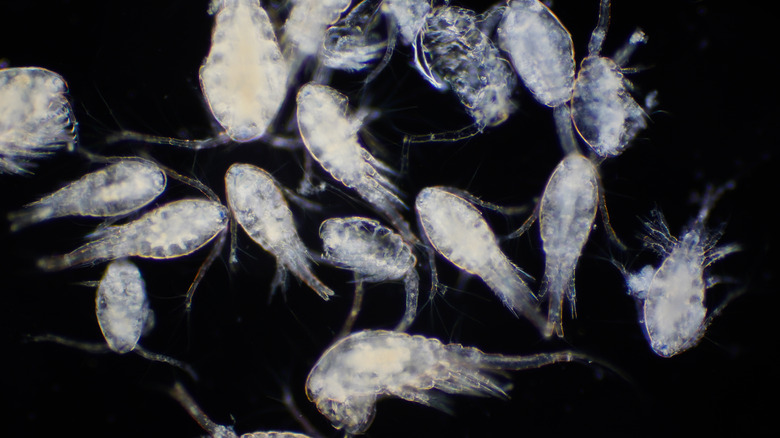The Little-Known Tip That Can Help Keep Backyard Water Features Mosquito-Free
Imagine relaxing on the porch on a breezy summer afternoon, cold drink in hand, a good book on the table, and fresh water gently trickling in the distance. The idea of a backyard water feature sounds delightful, but the incessant buzzing of mosquitoes is a much less pleasant idea. Even if you follow all the essential tips for keeping mosquitoes out of your backyard water features, it can be hard to keep them at bay, especially if you don't want to dump the water every day or use any chemical treatments. Nature has its own brilliant ways of finding balance though, including predators that keep the world from being overrun by mosquitoes. If you're struggling to keep mosquito larvae under control, it may be time to hire nature's little hitmen: copepods. Copepods are small crustaceans with a big appetite for mosquito larvae, and by adding a colony of them to your water feature, you can save yourself a lot of fuss and frustration.
Unless your backyard water feature comes from a natural source, it probably doesn't contain any copepods, making it an ideal spawning site for mosquitoes. Luckily, adding these tiny guardians to your backyard pond is relatively simple, as long as you meet some basic environmental needs. Here's what you need to know about copepods, how they can help to control your mosquito populations, and tips for keeping these tiny crustaceans in your backyard water feature.
Copepods will cull out the larvae
Copepods are tiny crustaceans, also known as animal plankton. Most are somewhere around 1 to 2 millimeters long, but you can still see them with the naked eye. In general, the larger-bodied copepod species, like Macrocyclops albidus, are better for mosquito control, and they can also survive on other prey when there aren't enough mosquito larvae to go around. Depending on the species, a single copepod can kill as many as 40 mosquito larvae per day, preying especially on young larvae that are around one to four days old. In fact, copepods are more effective at hunting mosquito larvae than any other invertebrate, and may continue to attack larvae even when they're not hungry. Unlike chemical solutions, copepods are totally harmless to the humans, pets, deer, and birds you want in your backyard.
Where can you find these wonderful little critters? Copepods are naturally abundant in calm bodies of water, both saltwater and freshwater, and tend to congregate near underwater plants. If you head to your nearest lake, pond, or even a flooded ditch, you can likely scoop up a bunch of little copepods in a container. This is a good way to collect native copepods that are likely already accustomed to hunting mosquito larvae.
Caring for your copepod colony
After collecting your copepods, acclimate them to the water by floating the container for a while and adding pond water slowly before releasing them. In the right conditions, copepods will reproduce quickly on their own, so you won't need to acquire many to start your water feature defense team. Copepods will live year-round, and adjust their population numbers to suit the size of their body of water, so no backyard water feature is really too big or too small to keep them. These crustaceans do best in warm weather, but they can survive through brief periods of cold and even freezing temperatures. Because copepods are harmless, you could also use them to keep mosquitoes out of your rain barrel, but you'll probably scoop some out when you draw water from it.
Unlike fish or other aquatic animals, copepods require little to no care to keep in your water feature. These resilient creatures can thrive in a wide range of temperatures, pH levels, and salinity levels. In ideal ranges, however, the colony will be healthier and produce more eggs. If you have any small fish in your pond, you can expect them to pick off some copepods. In the end, keeping copepods prove that garden water features don't have to be difficult. Copepods love to settle around plants and decomposing debris, so leaving some leaf litter in and around your water feature can help them get cozy and work their magic against mosquitoes.


